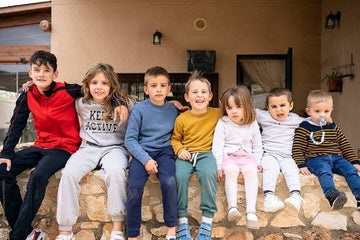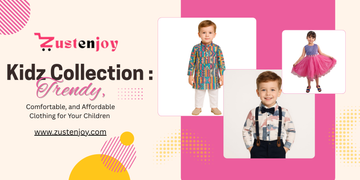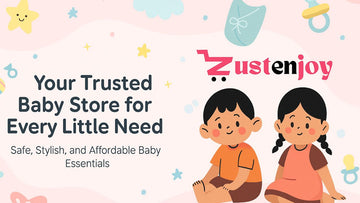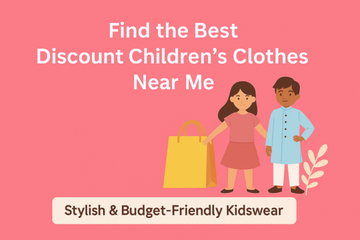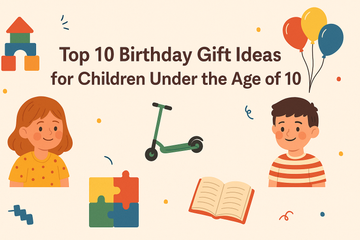Every parent knows that buying clothing for kids is not simply a matter of choosing something adorable. It’s a matter of guaranteeing comfort, durability, safety, and yes, style as well. Whether you are on the lookout for a toddler who plays incessantly or a school-age child who is developing a sense of fashion, selecting the best clothes is an everyday juggling act.
The marketplace now is full of creative possibilities—organic cotton, bright prints, colorful accessories, seasonal layers, and themed collections. But amidst all that choice, what really makes the best kids’ clothes?
What Makes Clothes Truly “Kid-Friendly”?
Good kids’ clothing isn’t merely a matter of what looks good but also what feels good, wears well, and accommodates movement and growth. Here’s what to look for:
- Comfortable Fit: No constricting collars, scratchy seams, or stiff clothing.
- Easy to Wear: Elastic waistbands, front zippers, or buttons that they can operate on their own.
- Durability: Clothing that can withstand crawling, playgrounds, and repeated washing.
- Weather-Appropriate: Breathable in hot weather, layered in cold weather, rain-friendly when necessary.
- Safe Fabrics: Hypoallergenic materials, non-toxic dyes, and no choking hazards such as loose buttons.
Essentials of a Versatile Kids’ Wardrobe
Irrespective of whether you’re starting a wardrobe from scratch or overhauling season-wise, here are the essentials you should include:
1. Everyday Basics
- Cotton T-shirts
- Leggings or stretchy pants
- Shorts or skirts
- Undergarments and vests
2. Seasonal Additions
- Sweatshirts and hoodies
- Light jackets
- Woolen sweaters, thermals
- Raincoats and gumboots
3. Occasional Wear
- Party dresses or formal outfits
- Festive ethnic wear
- Matching sets for photoshoots or vacations
4. Variety of Footwear
- Sneakers for comfort
- Sandals for summer
- School closed shoes
- Floaters or slip-ons for play
Fabrics That Suit Children Best
Getting the right fabric is important. Children have sensitive skin and are constantly in motion, so their clothing must breathe, stretch, and absorb.
- Cotton: Soft, light, and hypoallergenic—ideal for daily wear and tropical weather.
- Bamboo Fabric: Environmentally friendly, antibacterial, and skin-friendly—perfect for babies and toddlers.
- Jersey Knit: Soft and stretchy, perfect for onesies, dresses, and T-shirts.
- Fleece: Lightweight and warm, great for winter dressing.
- Linen Blends: Lightweight and quick-drying—perfect for summer events.
Steer away from synthetic fibers such as polyester for casual wear unless mixed with cotton or worn in outerwear.
Age-Based Clothing Needs
As your child ages, their clothing requirements change accordingly. Here’s the lowdown by age group:
Newborn to 1 Year
- Bodysuits, sleepsuits, mittens
- Front-opening garments for simple changing
- Soft cotton and breathable fabric only
Toddlers (1–3 years)
- Stretchy trousers, T-shirts, dungarees
- Easy-on garments with few buttons
- Play clothes that can survive crawling, climbing
Preschoolers (3–5 years)
- Matching outfits, elastic-waist bottoms
- Bright colors, character prints
- Clothes encouraging self-dressing
School-Age (6–10 years)
- Style tastes emerge—invite input
- Smart-casual choices for events
- Layering pieces, uniforms, hardwearing shoes
Tips to Shop Smart for Kids’ Clothing
Purchasing children’s clothing is not about following trends. Here is how you can make sensible, lasting buys:
- Size Up When Uncertain: Children develop quickly. If you’re not sure, always purchase one size bigger, particularly for seasonal wear they may use next year.
- Spend on Quality Staples: Skimp on nothing as far as innerwear, regular tees, or sleepwear is concerned. These get worn frequently and washed, so it’s about quality.
- Make Mix-and-Match Outfits: Stick to a consistent color scheme so everything will go together nicely. This conserves time and money.
- Don’t Overbuy for One Season: Kids tend to outgrow or destroy their clothes in no time. Purchase just enough to cycle through a week or two.
- Check the Return Policy: If shopping online, ensure there is a simple return or exchange policy in case the fit is incorrect.
Organizing a Child’s Wardrobe at Home
Here’s how to deal with all those little garments without the clutter:
- Store socks, undergarments, and accessories in labeled containers.
- Dresses, jackets, and school uniforms hang up, keeping them wrinkle-free.
- Everyday wear stored within reach of the child, to foster independence.
- Seasonal clothes rotate into storage containers when not in use.
Letting Children Select Their Own Clothes
At about 3 or 4 years old, children start to show their color, print, and style preferences. As a parent, giving them the opportunity to make small decisions helps to foster independence and self-expression.
- Provide two or three outfit choices and allow them to select.
- Don’t fight over clothes unless it’s for safety or weather reasons.
- Add a favorite color or cartoon print to generate enthusiasm.
Sustainable Choices in Kids’ Clothing
Sustainability in children’s fashion is on the rise. Consider:
- Purchasing organic or chemical-free clothing
- Selecting brands that provide ethical manufacturing
- Wearing hand-me-downs or second-hand clothing
- Donating gently used clothing
- Selecting fewer, higher-quality items
Not only is it kinder to the earth, but sustainable fashion is generally tougher and safer for your child’s skin.
Last Thoughts
Selecting the most comfortable clothing for children isn’t about labels or cost—it’s about what feels best for your child’s comfort, safety, and life. Whether they’re out discovering nature, heading to school, or a birthday party, the correct clothes allow them to be themselves and navigate the world easily.
With deliberate decisions, attention to fit and fabric, and child-centered thinking, you can create a wardrobe that you and your child will adore—practical for you and fun for them.
FAQs: Children’s Clothes Shopping
Q1. How many clothes do I need to purchase for a toddler?
Approximately 5–7 sets of everyday wear, 2–3 sleepwear sets, 1–2 celebratory outfits, and an outerwear jacket or two, depending on weather conditions.
Q2. Which is the best clothing for sensitive skin?
Organic cotton or bamboo fabric is ideal for kids with sensitive or allergic skin.
Q3. Should I let my child select their clothes?
Yes! Present several parent-approved choices and allow them to select. It boosts confidence and assists with self-dressing.
Q4. Is spending money on kids’ clothing worth it?
On special occasions, perhaps. But for everyday wear, comfort and durability are more important than cost.
Q5. When should I begin to buy the next size?
If your child is close to the top of their current size or a growth spurt is imminent (e.g., seasonal change), it’s wise to go up.

